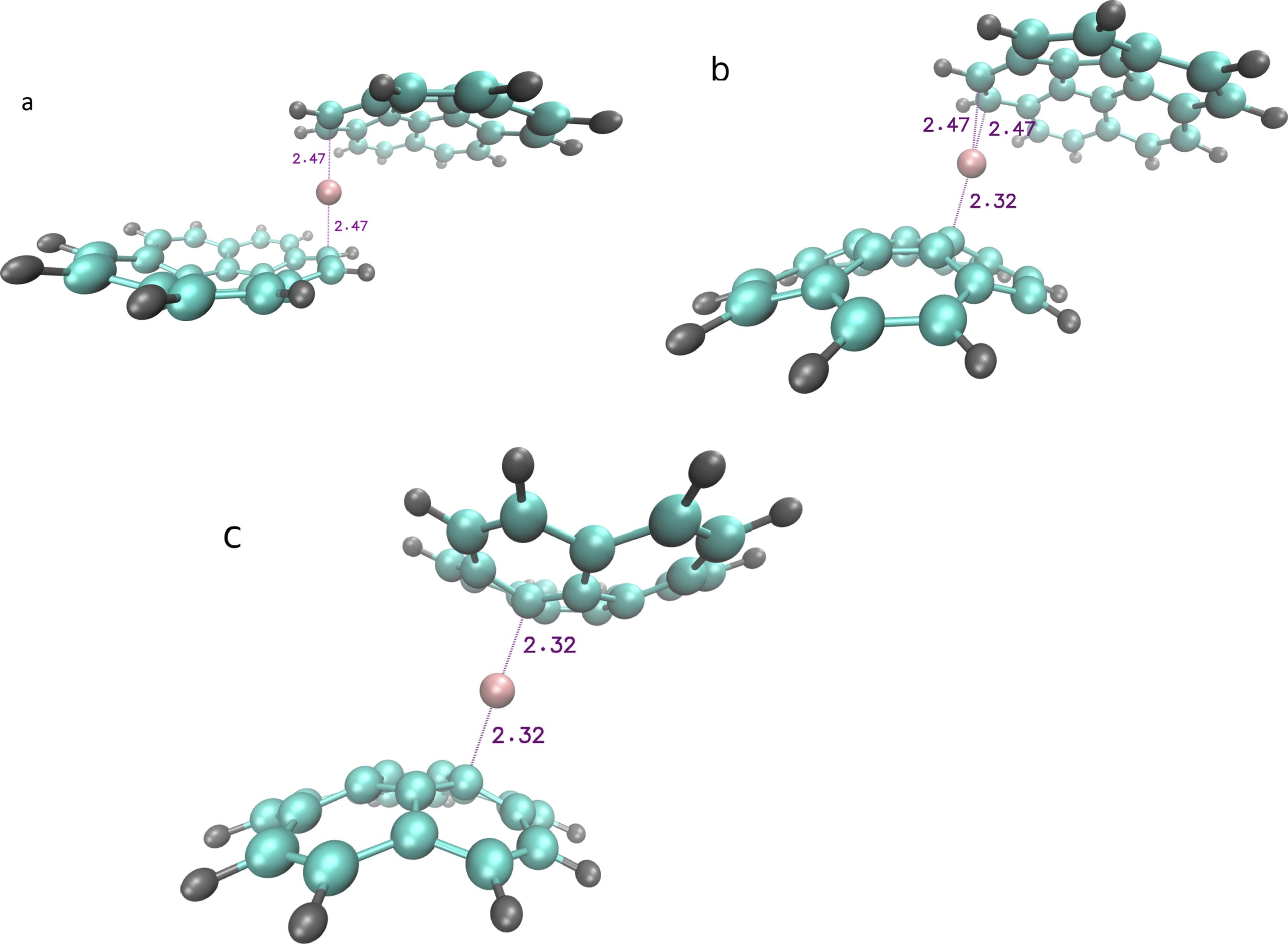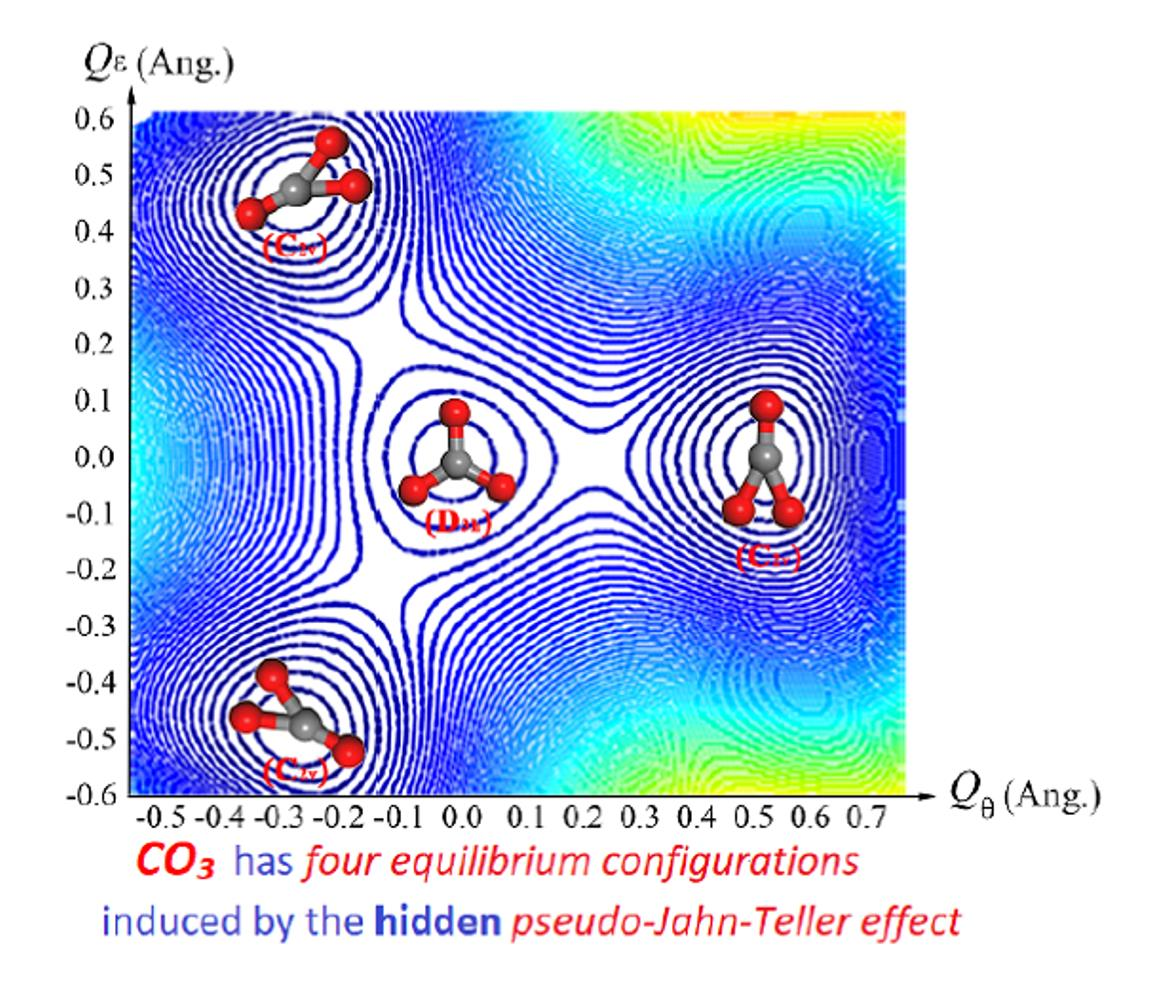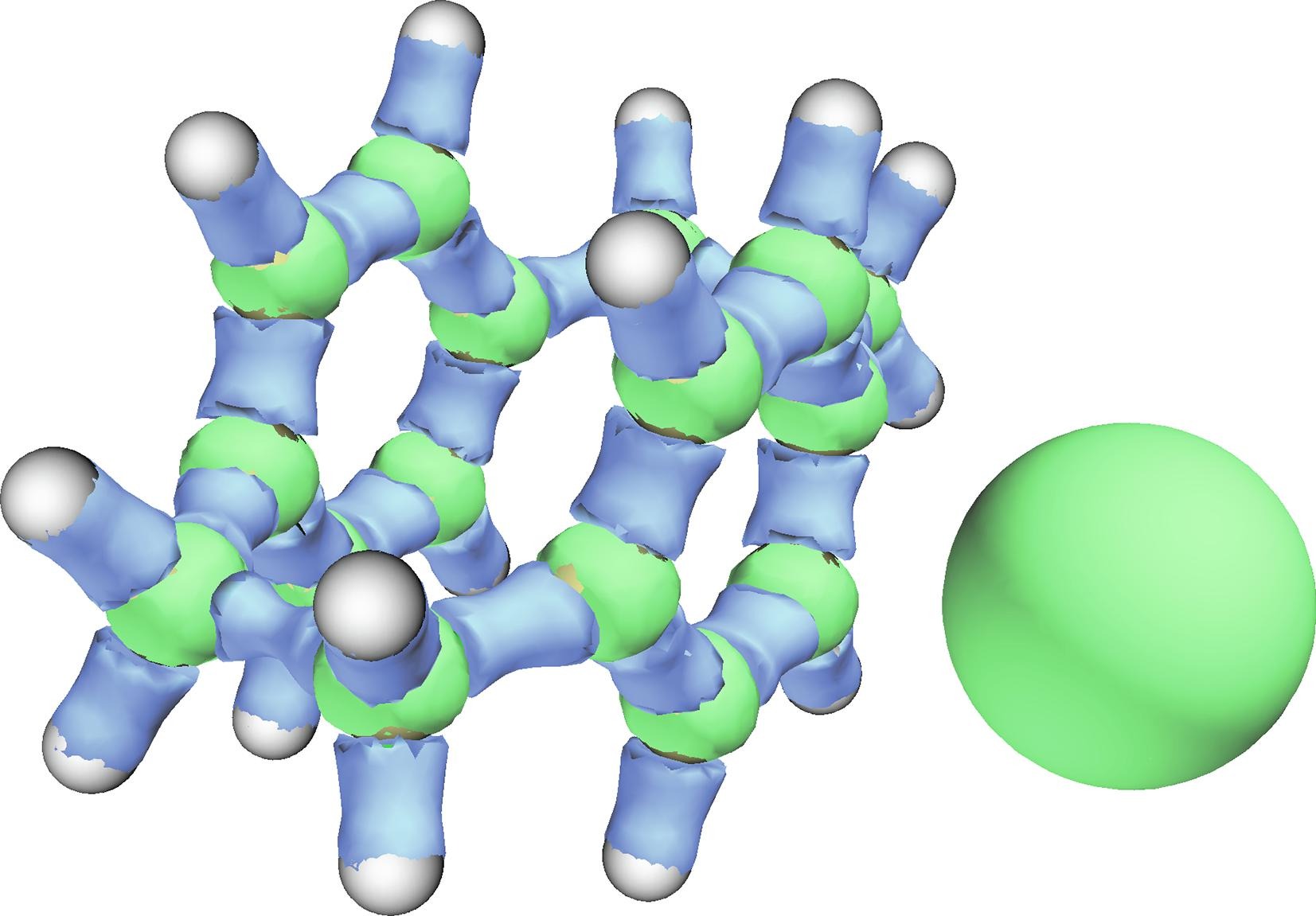Conformations of ligands

Interaction of Ag+ with corannulene
Symmetry breaking

In a mostly review paper, we show that the important problem of symmetry, broken symmetry, and spontaneous broken symmetry of polyatomic systems is directly related to the Jahn–Teller (JT) and pseudo-Jahn–Teller (PJT) effects, including the hidden-JT and hidden-PJT effects, and these JT effects (JTEs) are the only source of spontaneous symmetry breaking in matter. They are directly related to the violation of the adiabatic approximation by the vibronic and other nonadiabatic couplings (jointly termed nonadiabaticity) in the interaction between the electrons and nuclei, which becomes significant in the presence of two or more degenerate or pseudodegenerate electronic states. In a generalization of this understanding of symmetry, we suggest an improved (quantum) definition of stereo-chemical polyatomic space configuration, in which, starting with their high-symmetry configuration, we separate all atomic systems into three distinguishable groups: (1) weak nonadiabaticity, stable high-symmetry configurations; (2) moderate-to-strong nonadiabaticity, unstable high-symmetry configurations, JTEs, spontaneous symmetry breaking (SSB); (3) very strong nonadiabaticity, stable distorted configurations. The JTEs, inherent to the second group of systems, produce a rich variety of novel properties, based on their multiminimum adiabatic potential energy surface (APES), leading to a short lifetime in the distorted configuration. We show the role of the Curie principle in the possibilities to observe the SSB in atomic matter, and mention briefly the revealed recently gamma of novel properties of matter in its interaction with external perturbation that occur due to the SSB, including ferroelectricity and orientational polarization, leading to enhanced permittivity and flexoelectricity.
Taken from Bersuker, I.B. Symmetry 2021, 13,1577. https://doi.org/10.3390/sym13091577
Bound analysis

Reaction of the thallium(I) cation with [2.2]paracyclophane.
Laplacian isovalue ± 0.30 calculated by B3LYP/Def2TZVP.
The blue regions indicate the typical covalent bond between C-C and H-C atoms contrary to the Tl+
ligand interaction, which has typical ionic bond arrangement



